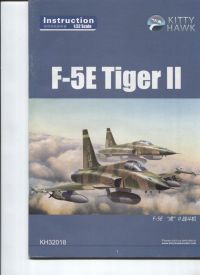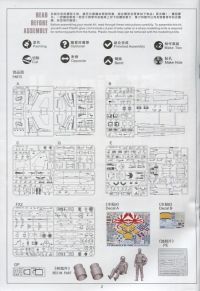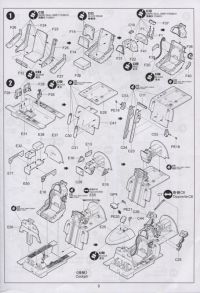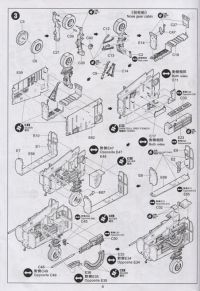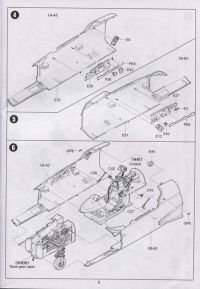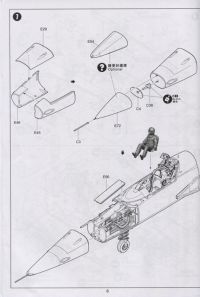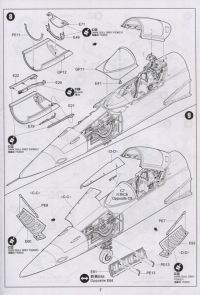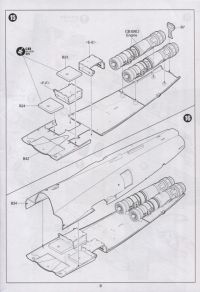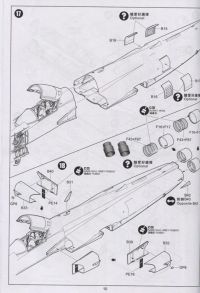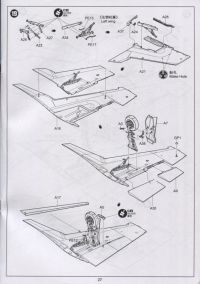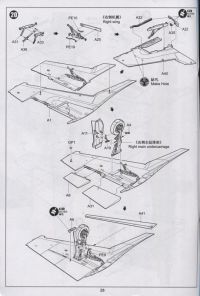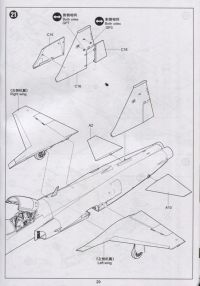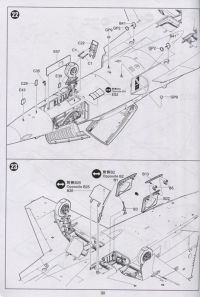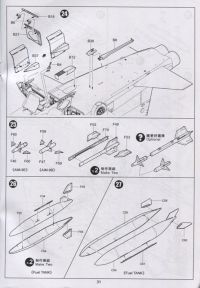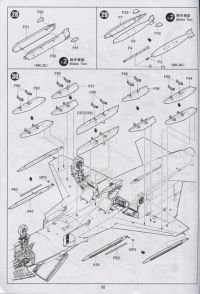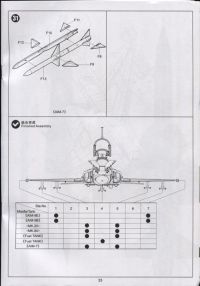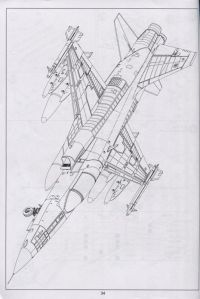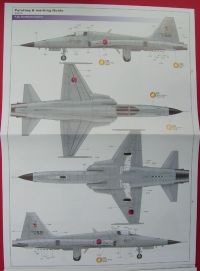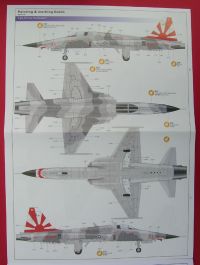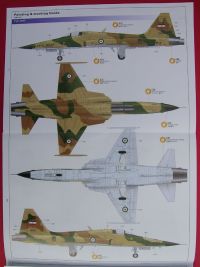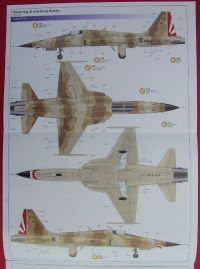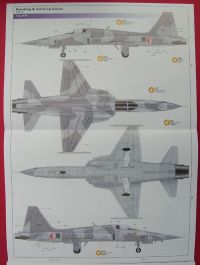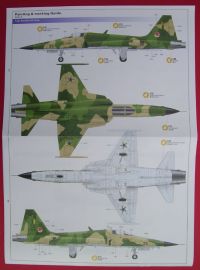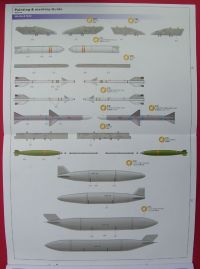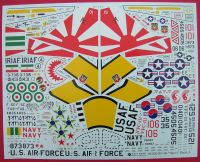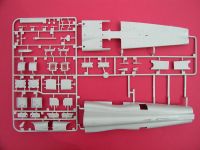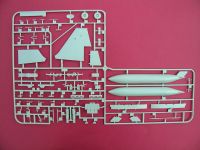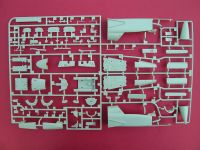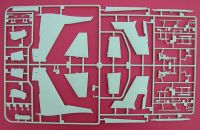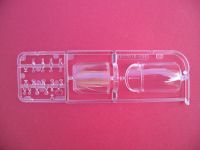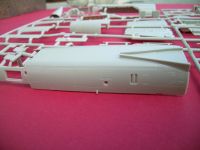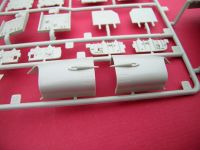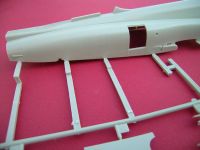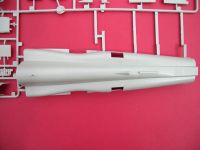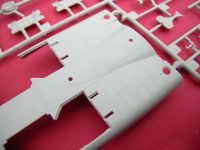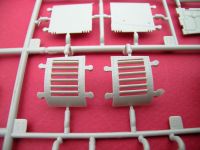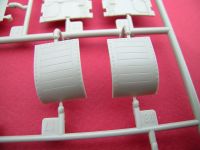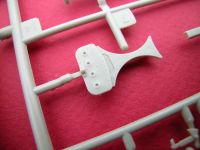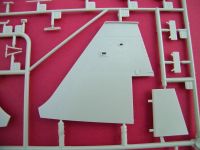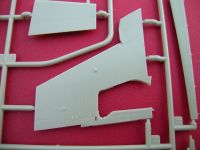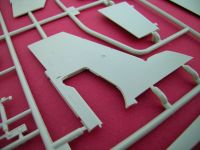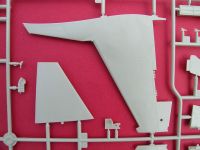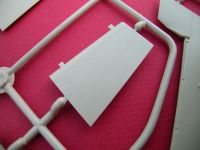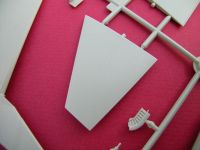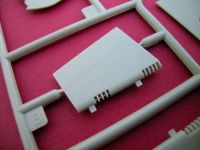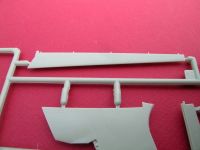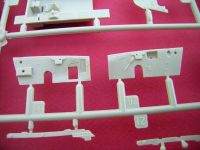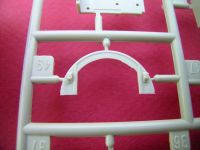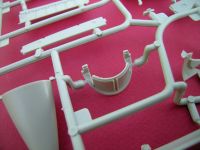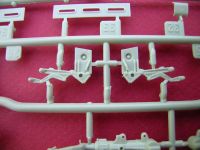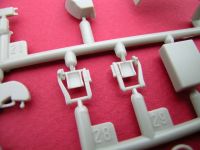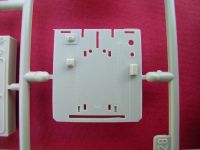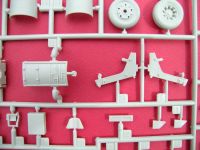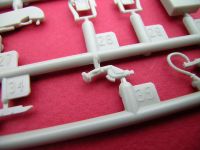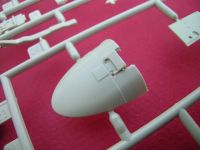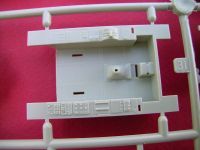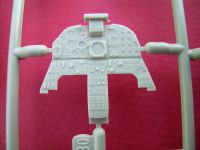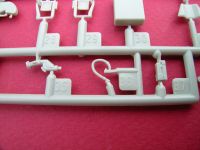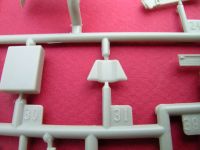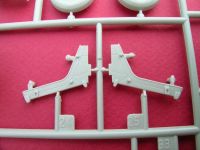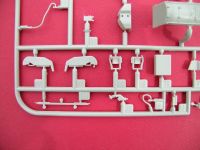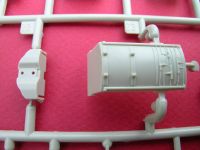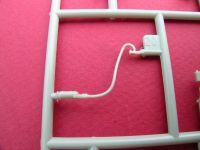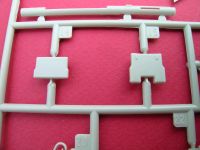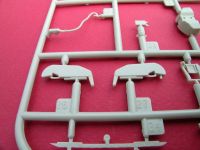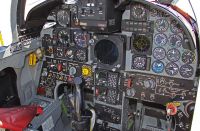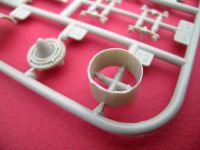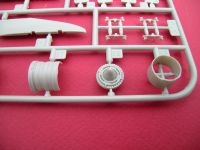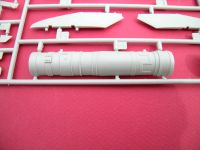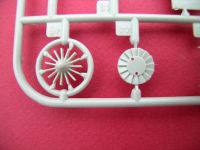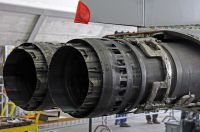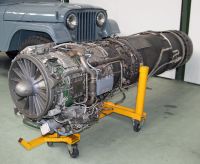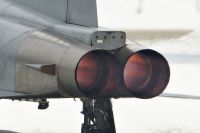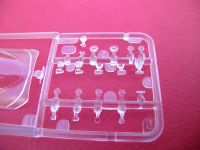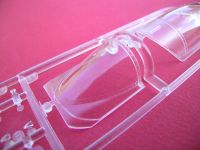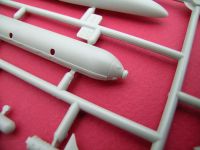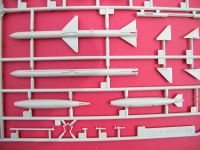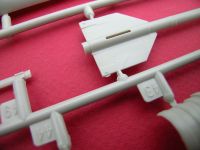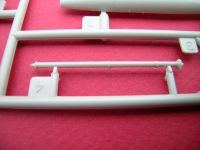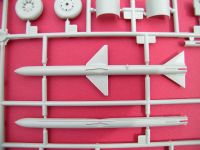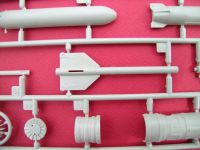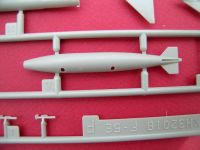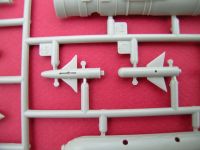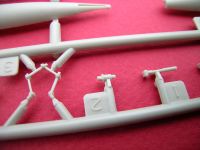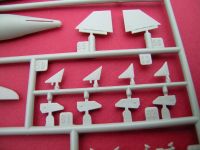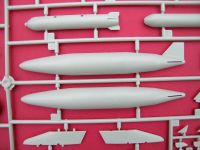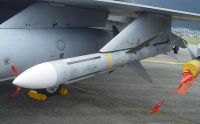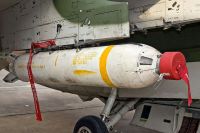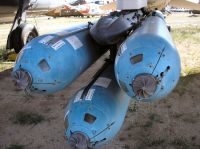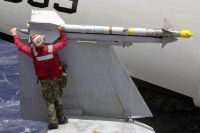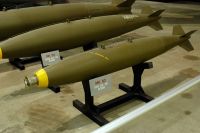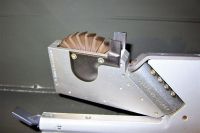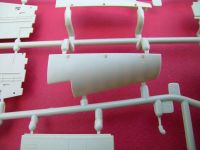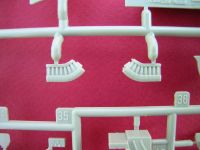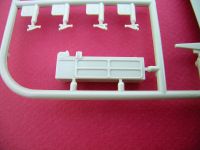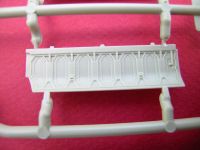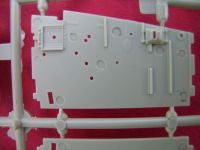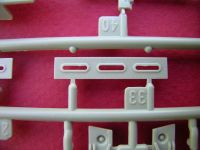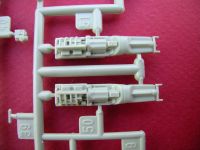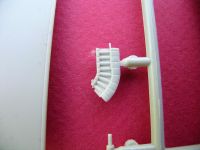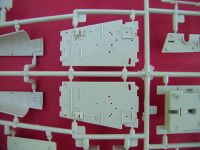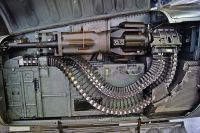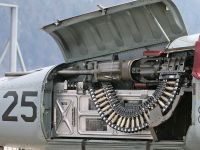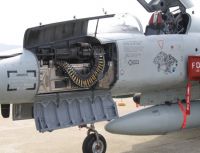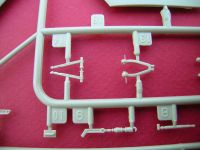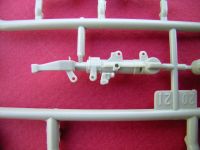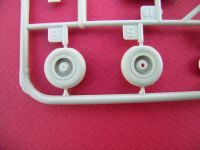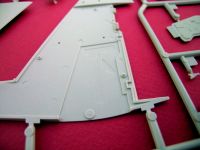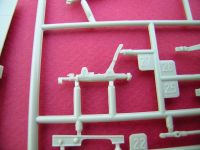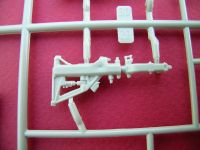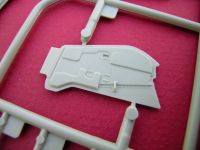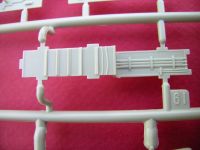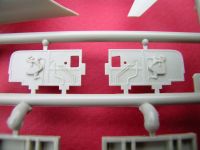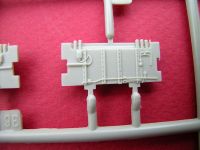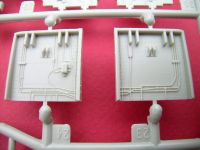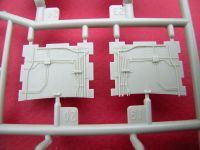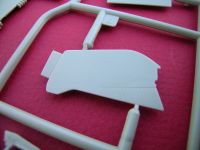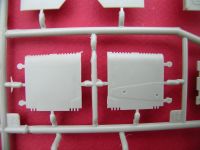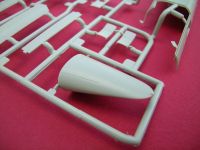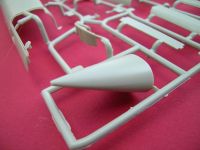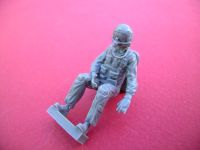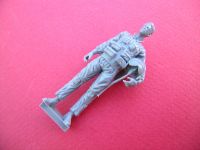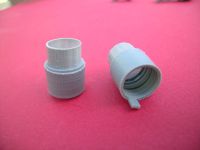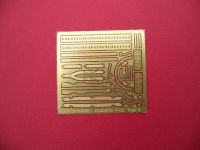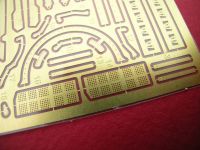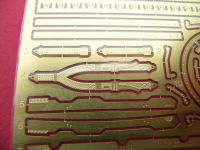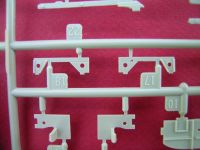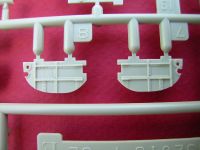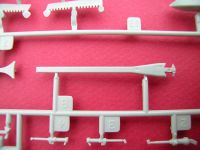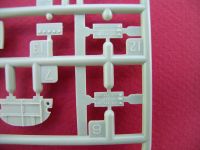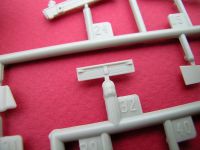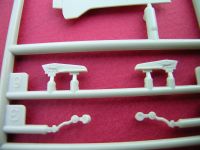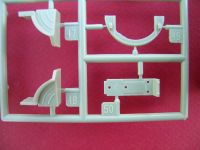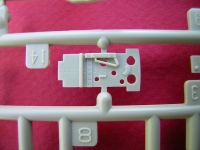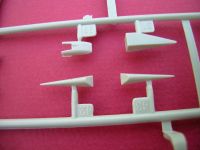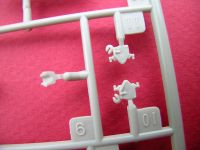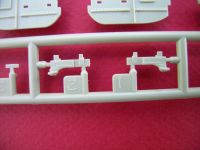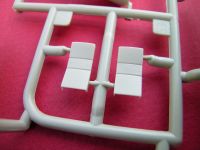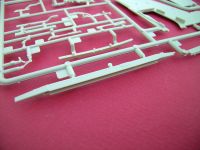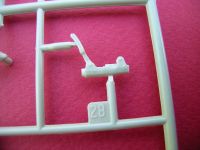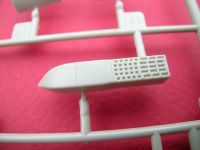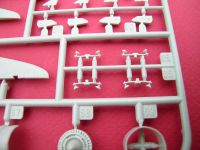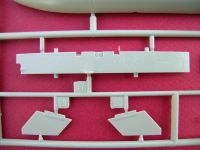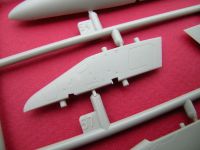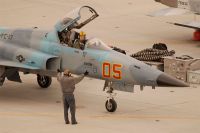Kitty Hawk Model | KH32018: F-5E Tiger II
Reviewed by Kevin Williams
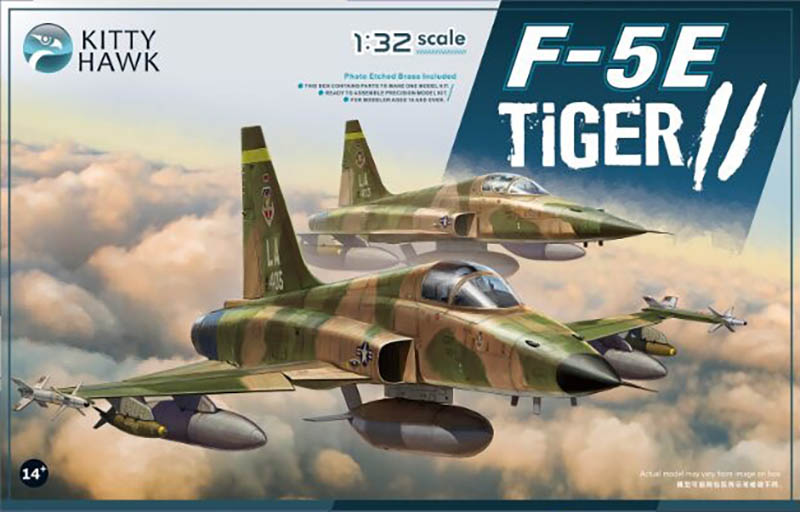
I decided at the outset to remove myself from the somewhat typical and lengthy description of the little Freedom Fighter technical development and operational history, as that information is readily accessible elsewhere.
Quite a new release, and I just got my hands on one, so thought I'd provide a quick look-see (which I hope to be fairly comprehensive) as to what exactly is offered in the box. (Since this is more of an in-box review than a build review, I have no photos of assembled sub-structures, so this look should be considered more of an overview of the various areas I thought might be of interest.) Many here and elsewhere are already dissecting the kit as regards accuracy issues, and I intend therefore, to not dwell on those aspects, which I typically try to avoid anyway.
Note: As I begin to dig through the kit, I must say that I'm quite impressed with the overall attention to detailing, with panel lines and rivets/fasteners (where present), all looking very nice to me, and well done.
Instructions
Instructions are depicted in a very nice pictorial way, with the added (to me) unique feature of having embedded fold-out full color drawings of the various schemes offered, a real nice touch that I highly approve of, and makes the whole package just appear that much more professional (see below).
Color Schemes
Decals
Markings are provided for no less than nine Tigers:
- F-5N (761543), VFC-111 "Sundowners", 3 greys scheme
- F-5E (761557), VFC-111 "Sundowners, 3 tans scheme
- F-5E (50521), South Korean AF, overall grey scheme
- F-5E (01431), Iranian Imperial AF, 2 browns/green scheme
- F-5E (873), RSAF, 2 greys scheme
- F-5E (4505), Mexican AF, SEA scheme
- F-5E (405), USAF, SEA scheme
- F-5E (4835), Brazilian AF, SEA scheme
- F-5E (01401), USAF, all silver scheme (erroneously referred to as a US Army AH-6J)
Decals appear to be in register, quite opaque, with good coloring, well detailed and also include plenty of stenciling. I'm really not sure who prints the decals for Kitty Hawk, but they look just a wee thick to me, though will probably prove to be quite acceptable to many. None of this really matters much anyway (at least to me), as I'll more than likely only ever do one kit, and decal options from other sources, should be easily obtainable by the time I get around to mine.
All nine schemes are depicted in two page fold-out all color illustrations, featuring both port and starboard views, as well as plan and inverse plan views, a real nice touch, as I see it.
There's also a two page all color fold-out with fuel tank and weapons painting and markings details, which is very nice to see.
Parts Trees
There are, by my count, seven parts trees (1) A, (1) B, (1) C, (1) Q (not provided in the -E kit), (1) E, (2) FX, and (1) GP. This count does not include the two small P.E. frets or resin parts that are also included.
Air-frame
Now that I have the kit "in hand", I can say that the surface detailing (not that I ever had any doubts), is very delicate and refined, and to me, looks quite excellent. Obvious slide mold marks are present on some parts, but a few swipes with a sanding stick and some Scoth-Brite, will handily deal with those. The flattened sprue runners to the starboard upper fuselage half, further attest to slide molds being used as needed here.
Two sets of fuselage louvers are provided (one set closed, one set open), a very thoughtful thing to do on the part of Kitty Hawk.
The "coke bottle" (area rule) appearance of the fuselage sides, seem to have also been captured rather well.
Wings
Not a lot to say here, except that wing surfaces look good to me, and seem to depict overall proportions and geometry pretty well. Only one style of leading edge extension is provided, but this is easily modifiable into the other known configuration, so I personally see this as no big deal.
Flying Surfaces
All of the flying surfaces display the same refined and good looking surface detailing that is common to all other areas of the kit. Rudder, flaps, ailerons, elevators and slats, all look great.
Cockpit
Not a lot to be said here, save for the notion that if one takes his time, the cockpit has the potential to be built into a pretty nice (and busy) representation right out of the box. The area behind the ejection seat is especially well done, and should look awesome, once all painted up. As has already been noted elsewhere, kit parts, as designed, only allow for a canopy open display configuration, so those wishing for a closed canopy, will either need to make some modifications, or leave a few parts off.
With the two FX trees provided, there then are also two identical ejection seats, though P.E. is only provided for one seat.
There are many more 'pit parts that are not illustrated in the above photos, but the area is very busy indeed, with all sort of cool bits to be added.
One area of disappointment for me, is the IP. Being accustomed as I am to the "sandwich style" of IPs provided in many newer kits, it would have been great to see that here as well. The molded IP (photo #65), looks really, really good, but is to be completely covered with a one piece decal, as are the 'pit side consoles, at least as an option. No mention is made of the use of these decals in the instructions, but then their location is painfully obvious, so I see this as no big deal.
The Real Deal
General Electric J85 Jet Engines
The Engine is another area that seems to fall somewhat short in the detailing department, but considering the fact that they are designed not to be exposed/removable, this is hardly a deal breaker for me, and certainly understandable. One problem I do see though, is a complete lack of any intake ducting of any sort. I'd imagine (and hope), that someone in the aftermarket world, will come to the rescue here, preferably with intake ducting, or as a poor second best choice, F.O.D. covers.
The Real Deal
Clear Parts
All clear parts are just that, crystal clear, distortion free and look just great. The vent on the port canopy side will not be appropriate to some versions, so best to check your references here.
Fuel Tanks/Weapons
There are numerous weapons and fuel tanks provided, as follows: centerline fuel tank (1), wing tanks (2), AIM-7 Sparrows (2), AIM-9B Sidewinders (2), AIM-9E Sidewinders, which I believe are actually AIM-9L/M Sidewinders, misidentified as AIM-9Es (2), Mk 20 CBU-100 Rockeye cluster bombs (2), MK 84 2,000 pound dumb bombs (2), which I believe, based on their size, are actually Mk 82 (non-retarded, free fall) 500 pound bombs. Dumb bombs are offered with two fusing options, as well as the plug device, usually seen in place prior to fuse installation, so that's pretty cool.
The fuses on the 500 lb bombs are certainly acceptable enough to me, but the fuses on the Mk 20 Rockeyes are completely fictional. Given the difficulties in capturing the blades of these fuses properly in injection plastic, this is actually quite understandable, as I see it. Also, the raised portions around the nose of the Rockeyes are actually flush, there should only be two (kit depicts three) and these should be two different sizes, not identical as offered.
The Real "Stuff"
M39A2 20mm Cannons & Bays
A very nice attempt has been made here to capture the look and feel of the M39A2 weapons, feed chutes and ammo boxes, as well as other ancillary "stuff". For whatever reason, most photos I've found, depict an access door on forward end of both ammo boxes (at least two different styles), but these doors (while being depicted on starboard ammo can) are not provided in the kit for the port side box. Other than that, I think the area can look pretty spiffy, once painted up. Also, doors (both upper and lower) seem to capture the real deal quite nicely (especially the interiors), though the suspension straps (item #PE13) for the lower door, depict an angled configuration, when in fact they should hang straight down (gravity, anyone?). Ammo bay (upper) doors, if used in the open position, feature nicely done open locking latches. Modelers wishing to depict these doors closed, will need to address these latches, making them flush with the surrounding material of the doors, and again, not really a big problem.
While the 20mm ammo feed chutes (offered as two separate parts per gun), look pretty good "as is", are unfortunately far from being genuinely accurate in appearance, so hopefully the aftermarket folks will be addressing this shortfall (as was done for the Tamiya Mosquito MG feed chutes). Again, the limitations imposed by the injection molding process, would make capturing these feed chutes accurately, very challenging indeed, and would probably be cost prohibitive. (Note: starboard ammo box is larger than the port box, and as far as I can determine, this is not correct.) There is an additional port ammo box included in the kit, but this differs slightly from the port box on the "E" sprue. The purpose of this additional box (and feed chute portion), is unclear.
The Real Deal
Landing Gear, Wheels, Speed Brake Wells & Doors
Main landing gear bay (and nose wheel bay for that matter) are comprehensively detailed, and should really look the business once assembled and painted. I don't generally find myself being too impressed with wheel bays one way or the other, but I believe these will be way more than satisfactory for me.
Main wheels/tires look to also be molded excellently, with authenticity readily captured.
Radar Nose Cones
Two different nose cone options are provided; the "pointy" variety, as well as the "Shark nose" option, another thoughtful inclusion by Kitty Hawk.
Pilot Figures
Two resin cast figures are included, one standing and one sitting, and really look quite nice, adding a nice additional element of value to the kit.
Engine Nozzles
Two resin cast engine nozzles are provided, and really look quite nice, also adding a nice additional element of value to the kit.
Photo-Etched Parts
Two P.E. frets (brass) are included, and contain items such as canopy and engine details, screens, seat belts/harnesses, etc. I've already managed to lose one small set, so I really hope they weren't something that's badly needed.
Miscellaneous Bits
There were a few portions of the kit that I photographed, but had no specific category for, so I decided to just lump them all together here, as they are undoubtedly relevant. Included in this group, is the wingtip sidewinder launch rail, which is indeed very nicely done.
Summation
All in all, I think this is a great effort from Kitty Hawk, and definitely a leg-up on the antique Hasegawa kit, that's for certain. Since I personally see no model as being perfect, for the few shortcomings I do see here, I also still see wonderful opportunities for a great looking F-5 to be built from this release, and I'm tickled silly to now have it in my stash.
My review copy compliments of Glen from Kitty Hawk Model, and now..."it's mine, all mine"!
Parting shot, so to speak.
© Kevin Williams 2018
This review was published on Thursday, May 10 2018; Last modified on Thursday, May 10 2018

